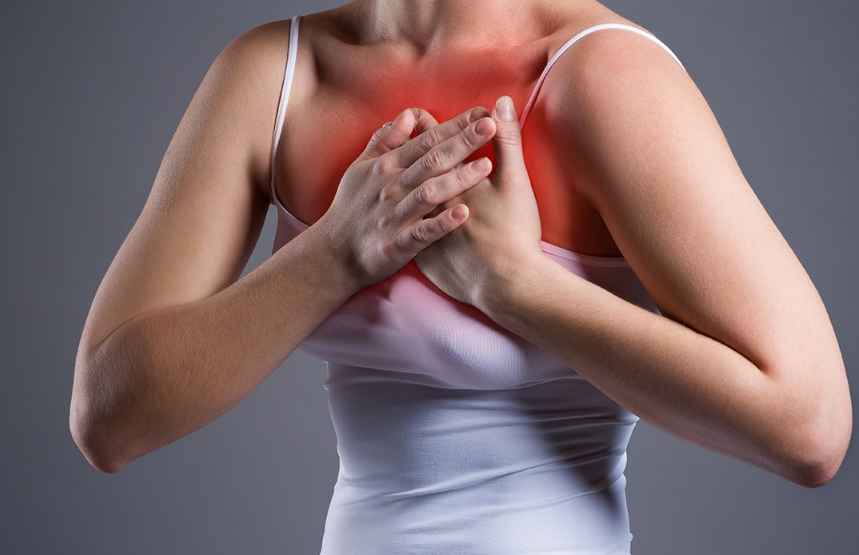
More young people are also becoming concerned about their heart health. Even a physical movement can trigger sensitive nerves - "Am I close to having a heart attack?" Check the information quickly. Chest pain is a heart attack? In fact, there are many causes of chest pain.
Many people feel that the heart was suddenly pricked by a needle, or a fork in the pain for a while, is it angina pectoris, a heart attack? What are some common chest pains that are not necessarily angina? Today, we will select a few common chest pain and myocardial ischemia chest pain to make a simple distinction.
Miles from the outside, the first one is cutaneous shingles. Shingles is more common, and the pain is more severe, local touch or friction will be aggravated, shingles early does not necessarily have a rash out, the surface is not necessarily not visible, need to identify.
The second is a fracture, especially the elderly osteoporosis, common is carrying the elderly downstairs, a little push, bump, rib fracture, will lead to pain, this pain may not hurt, a deep breath a cough may hurt, but also need to identify.
Angina pectoris has nothing to do with breathing and is not accompanied by deep breathing and aggravating pain.
The third is intercostal neuralgia, which also manifests as a stinging pain that lasts a few seconds. This sharp pain flash, the patient is very simple to describe "a second", "a second", that pain.
The fourth is costal chondritis, between the ribs and the sternum is cartilage, costal chondritis is a sterile inflammatory response, this pain, also with breathing or squeezing of the chest, is a relatively common chest pain. And angina pectoris is not pressed, there will be no "press" pain. Our heart is protected by the thorax, a bony structure that cannot be pressed with our bare hands.
The fifth type of chest pain is pleural pain. When pneumonia, pleurisy will also cause pain, characterized by breathing, pleural friction caused by pain.
The sixth is lung disease, including pulmonary embolism, which we take very seriously because it can be fatal. Pulmonary embolism is typically characterized by chest pain, dyspnea, and coughing up blood.
The difference between pulmonary embolism and angina pain is that the pain of angina is episodic, and the pain of pulmonary embolism is continuous. Of course, the performance of pulmonary embolism is not all pain, there are also painless symptoms, and some are very similar to angina, need to be identified.
Other clinical importance of aortic dissection, pneumothorax. Qi, chest, lung tissue squashed, will also hold breath, chest pain is particularly obvious, especially the kind of tension pneumothorax, which needs urgent treatment.
The presence of these symptoms is alert to a heart attack
Myocardial infarction, also known as acute myocardial infarction, has an acute onset and high mortality. The main risk factors include middle-aged or older, smoking, hypertension, hyperlipidemia, diabetes and so on.
The young age of myocardial infarction is a significant trend in recent years. Once myocardial infarction occurs in young people, the condition is often more serious, prone to arrhythmia and sudden death.
According to reports, patients in the occurrence of acute myocardial infarction before there are some precursor, such as a few days before the onset of fatigue, fatigue, chest discomfort, tightness, shortness of breath, palpitations, irritability and other activities after the symptoms of aggravation, even intermittent chest pain occurred, that is, angina pectoris attack.
Generally in the heart attack 24 hours before frequent attacks, the duration of each chest pain is not long, can have repeated attacks, often accompanied by sweating and nausea and vomiting, there may be chest tightness, dyspnea, dyspnea and other symptoms. Once the symptoms of a heart attack are detected, the following interventions should be taken:
Stop activity, stabilize mood, take oxygen and chew 2-3 aspirin (200-300 mg), if there is no hypotension, take 1 nitroglycerin subolingua.
If the condition does not improve, 1 tablet of nitroglycerin can be taken every 3-5 minutes, up to 3 tablets. Therefore, patients with relevant medical history should carry emergency medicine with them.
When encountering patients with cardiovascular disease, sudden severe pain in the heart and mouth, accompanied by cold sweat all over the body, we must first think of the possibility of acute myocardial infarction. At this time, you must not be busy moving, but should let the patient sleep on the spot, do not turn over, do not let its activity, do not let the patient speak, and the people around do not speak loudly, so that the patient can maintain a stable mood.
Maintain air circulation to facilitate breathing; Oxygen can be inhaled immediately if conditions exist; If there is an emergency cure around the patient, it should be taken in time, and call the emergency number for professional medical personnel to deal with, when the patient's condition is under control and then smoothly sent to the hospital for treatment.

